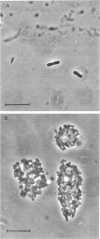Abstract
It was found that concentrated polyethylene glycol 400 (PEG 400) solutions have significant antibacterial activity against various pathogenic bacteria, including Klebsiella pneumoniae, Pseudomonas aeruginosa, Escherichia coli, and Staphylococcus aureus. This effect might be attributed to two effects: lowering of water activity and, superimposed on this, the specific action of PEG-400 molecules on bacterial cells. Phase-contrast microscopic observations of cells placed in contact with PEG 400 revealed clumping and morphological changes of bacterial cells. The larger changes in appearance were evidenced by the species which were more rapidly killed by PEG 400. The results obtained suggested that concentrated PEG 400 solutions may have a potential value in medicine as a topical antibacterial agent. The feasibility of this application is the subject of present investigation.
Full text
PDF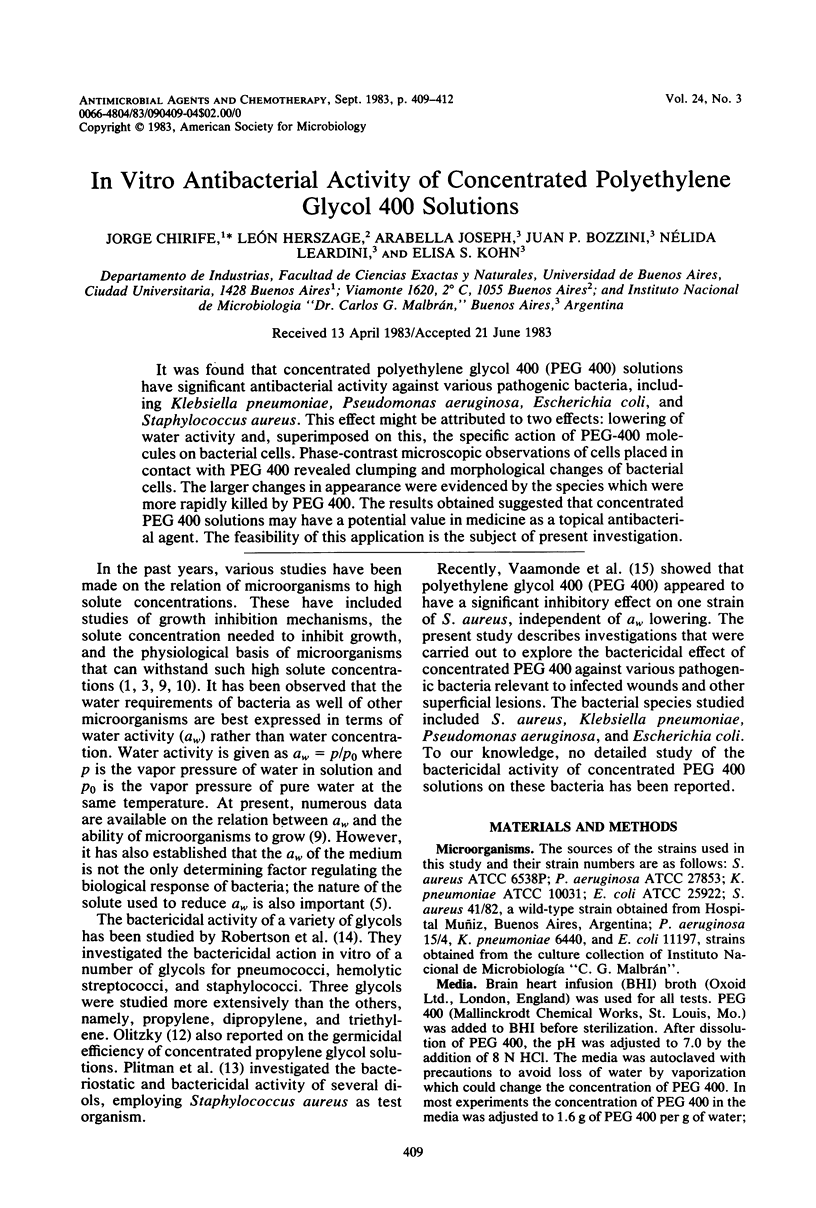
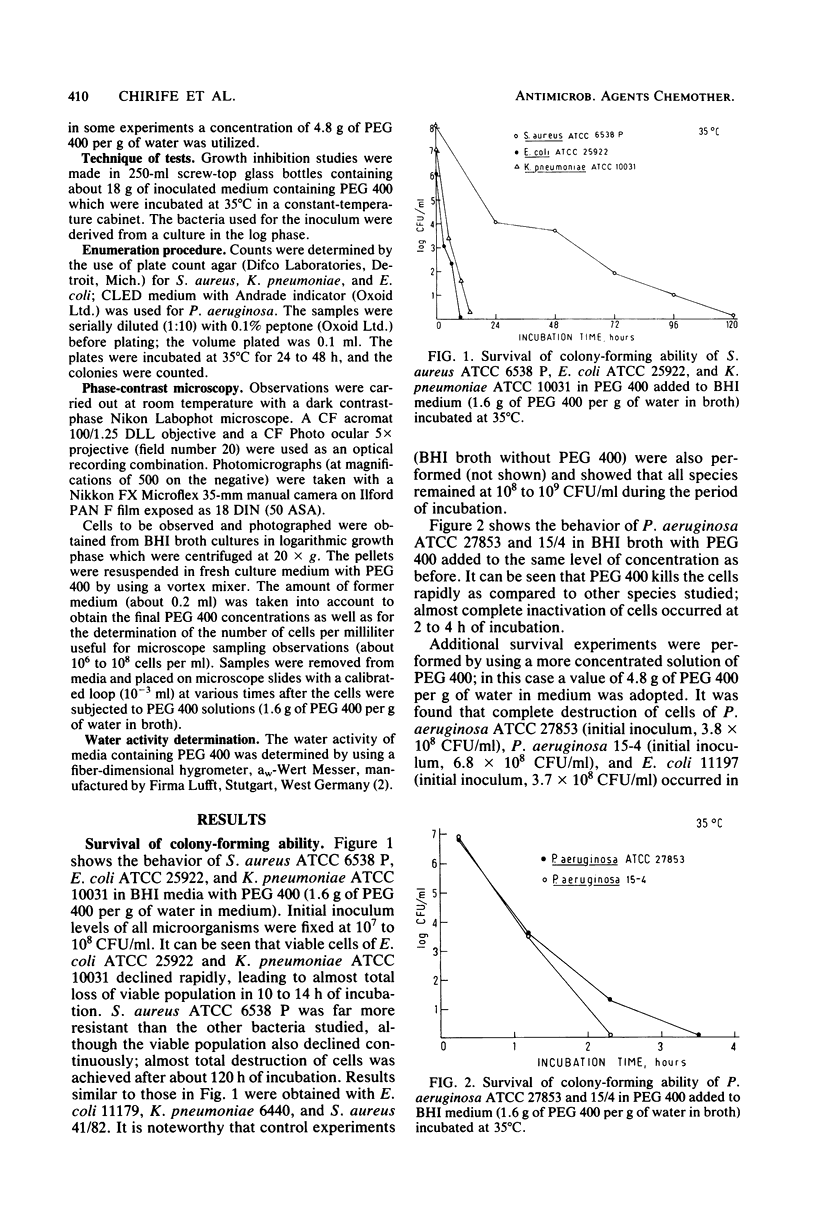
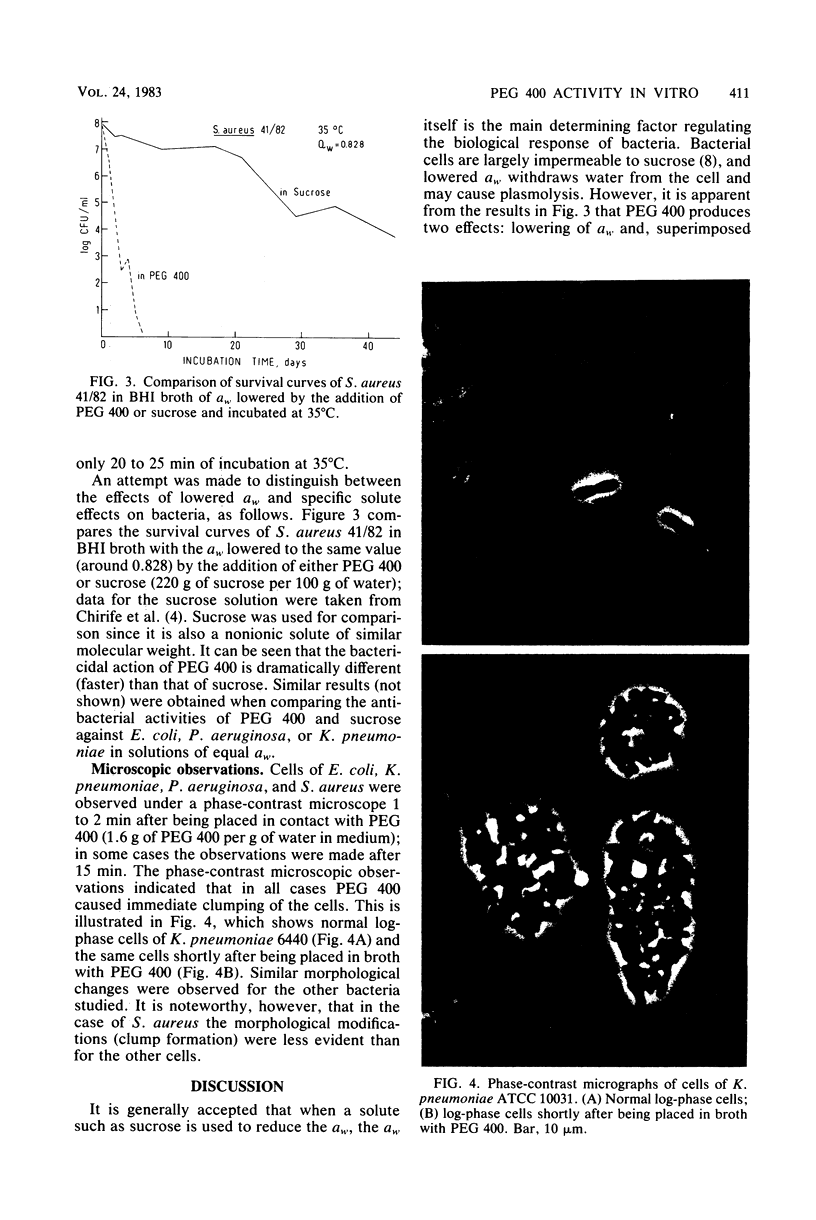
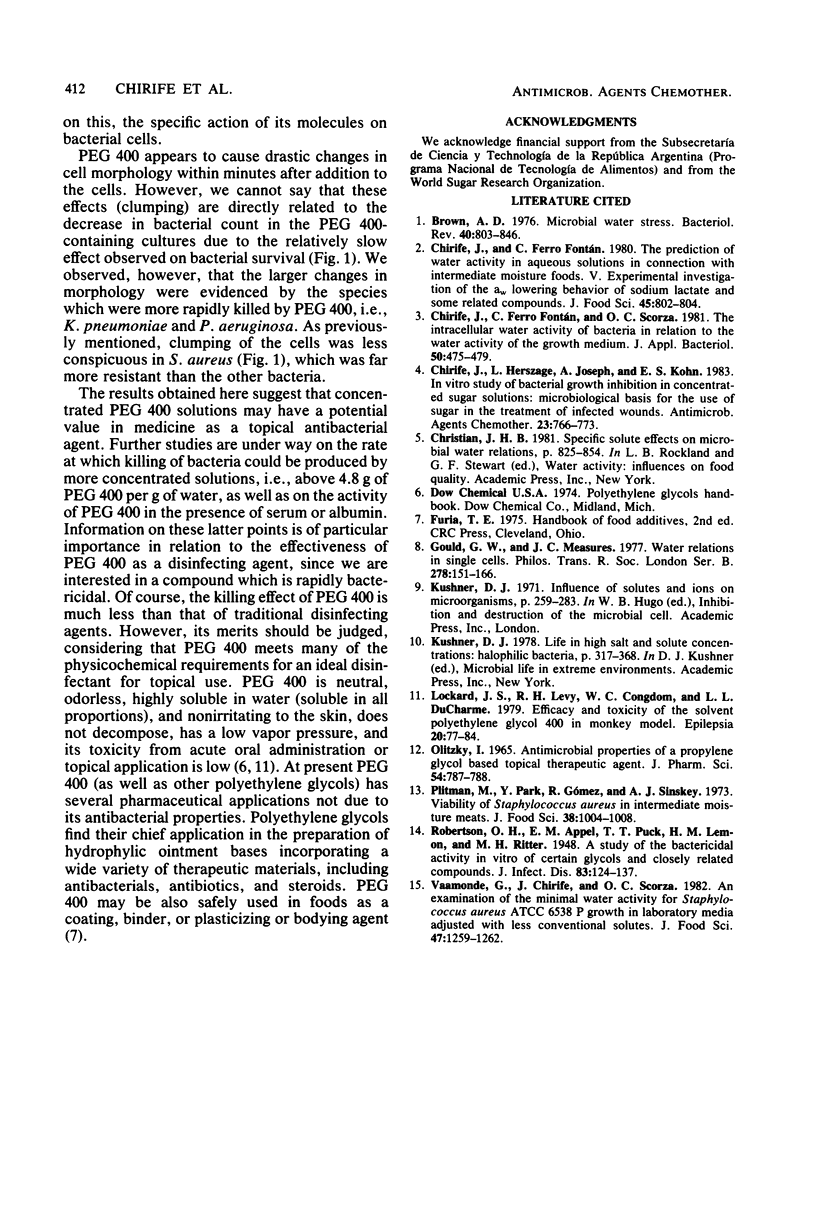
Images in this article
Selected References
These references are in PubMed. This may not be the complete list of references from this article.
- Brown A. D. Microbial water stress. Bacteriol Rev. 1976 Dec;40(4):803–846. doi: 10.1128/br.40.4.803-846.1976. [DOI] [PMC free article] [PubMed] [Google Scholar]
- Chirife J., Herszage L., Joseph A., Kohn E. S. In vitro study of bacterial growth inhibition in concentrated sugar solutions: microbiological basis for the use of sugar in treating infected wounds. Antimicrob Agents Chemother. 1983 May;23(5):766–773. doi: 10.1128/aac.23.5.766. [DOI] [PMC free article] [PubMed] [Google Scholar]
- Gould G. W., Measures J. C. Water relations in single cells. Philos Trans R Soc Lond B Biol Sci. 1977 Mar 29;278(959):151–166. doi: 10.1098/rstb.1977.0035. [DOI] [PubMed] [Google Scholar]
- Lockard J. S., Levy R. H., Congdon W. C., DuCharme L. L. Efficacy and toxicity of the solvent polyethylene glycol 400 in monkey model. Epilepsia. 1979 Feb;20(1):77–84. doi: 10.1111/j.1528-1157.1979.tb04778.x. [DOI] [PubMed] [Google Scholar]
- Olitzky I. Antimicrobial properties of a propylene glycol based topical therapeutic agent. J Pharm Sci. 1965 May;54(5):787–788. doi: 10.1002/jps.2600540528. [DOI] [PubMed] [Google Scholar]



